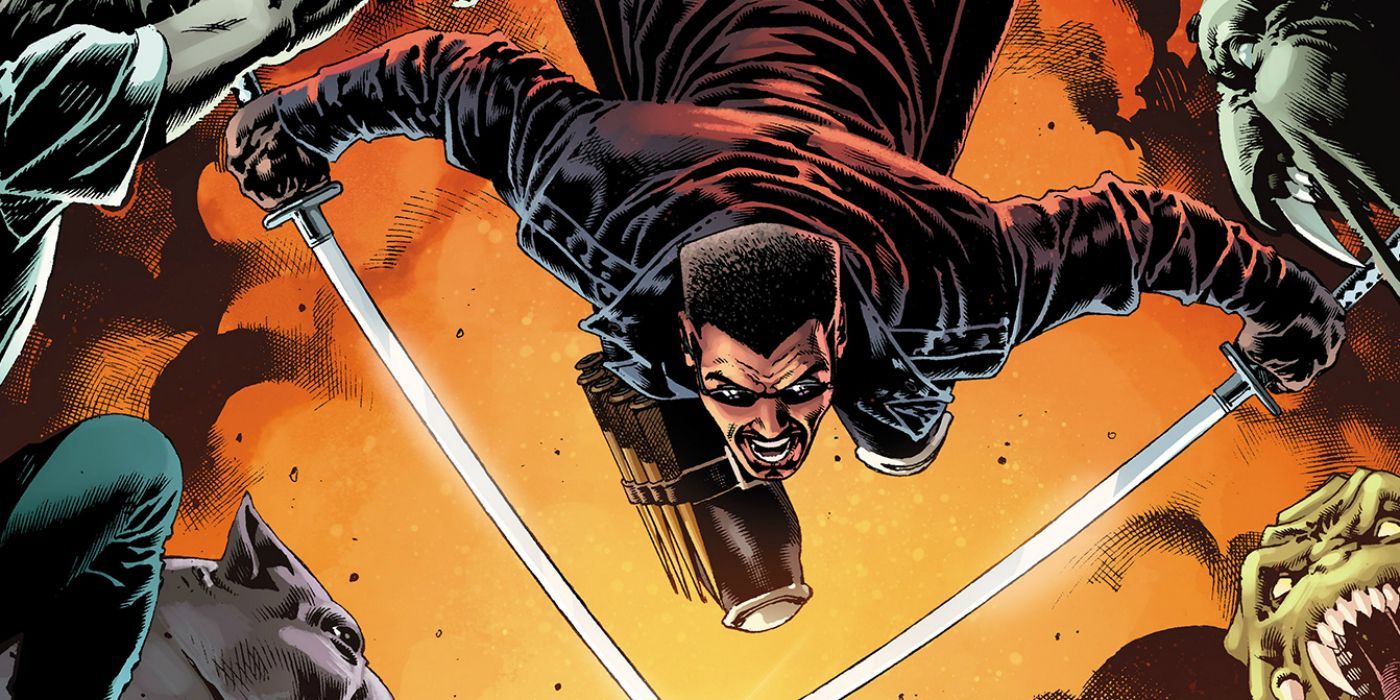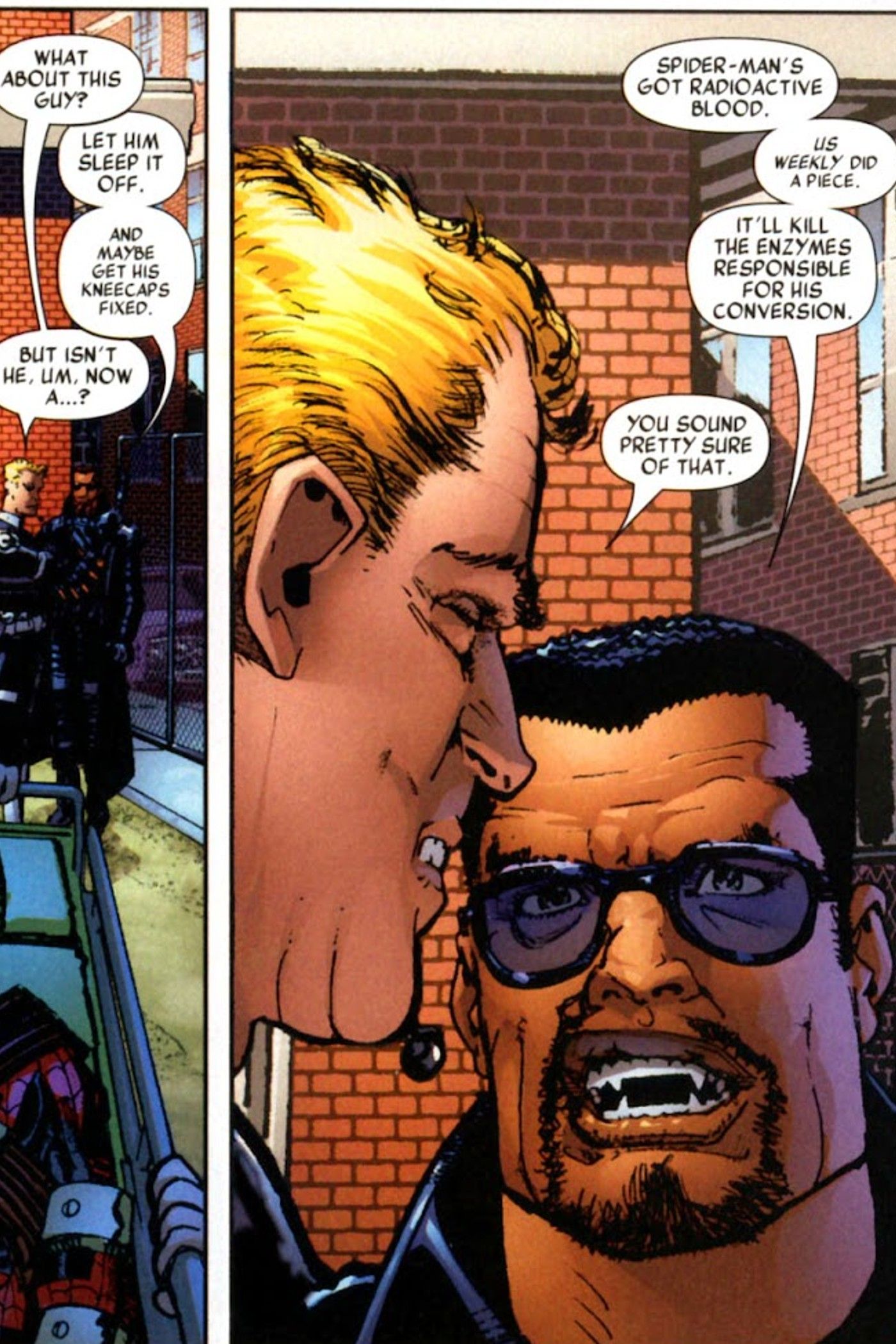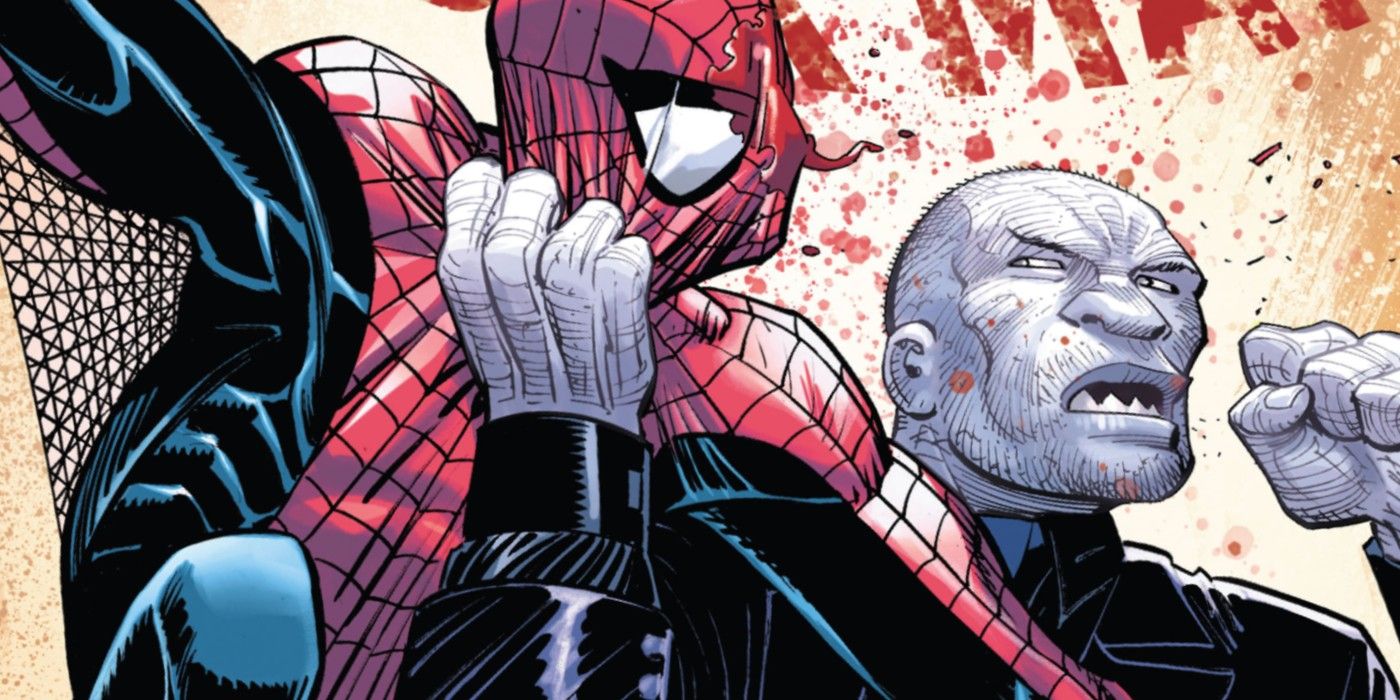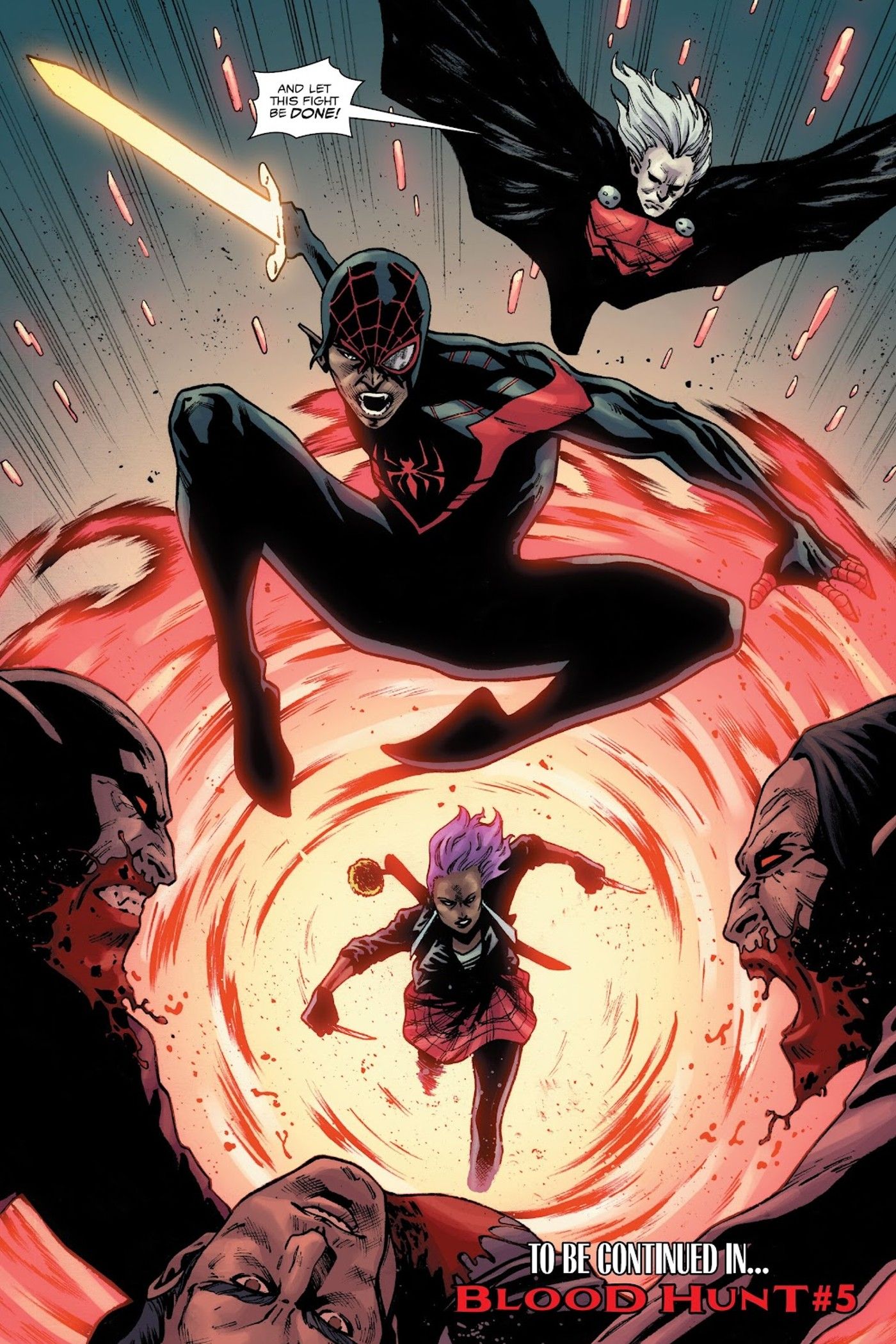Every version of Spider-Man should be immune to being a vampire for one key reason. Vampirism has quickly become essential to the Spider-Man mythos, specifically for the Miles Morales version, as he recently permanently became a vampire. While it’s certainly a unique power upgrade for Miles, it shouldn’t be possible based on past Spider-Man lore that Marvel established two decades ago.
2006’s Blade #1 – written by Marc Guggenheim with art from Howard Chaykin – sets up a vital component for Peter Parker’s Spider-Man which, in theory, should apply to all versions of Spider-Man moving forward. The issue opens with Blade fighting off a vampire-stricken Spider-Man, the latter losing the skirmish. As S.H.I.E.L.D is taking away the latter, Blade says one key line.
Creatively, it may be an easy way to explain how Spider-Man goes back to normal off-panel without dedicating too much time to a mere cameo character. Still, this one line changes Spider-Man’s physiology for vampires forever (or it should have, if only Marvel remembered it).
How Spider-Man’s Power Works on a Blood Level
Spidey’s Blood, Explained
It’s been well-documented that the radioactive spider that bit Peter Parker gave him the powers to become Spider-Man, but it’s often overlooked just how much that changed the entire making of his DNA. The spider from Spider-Man’s origin has an origin of its own, as it was mutated by gamma radiation. In biting Peter (and Cindy Moon, a.k.a. Silk), that radiation passed over into Peter’s physiology, changing it in the process. While the radiation he receives in Earth-616 wouldn’t make him as dangerously contagious as it would in darker timelines, it does still technically make him radioactive.
If Spider-Man bleeds out, his blood isn’t contagious. If his blood pours out onto the ground in the middle of a fight, it will not affect the environment nor does he harm a villain if he bleeds on them during a fight. History would suggest that after the contagion hit his system, Spider-Man’s blood is a contagion to him and only him. The same logic applies to other Spider-Men, including Miles, despite being bitten by a different spider in canon. It’s worth noting that Peter also carries a mix of Morbius’ blood in him, which cured him of his six-armed affliction.
How Vampirism Works in Spider-Man, and Other Marvel Comics
As We Understand It
As much as vampirism has entrenched itself into Spider-Man lore now, vampire lore itself is rich in the overall history of the Marvel Universe. While the since retconned Marvel origin story for vampires has framed them as descendants of alien criminals, current Marvel canon dates back to prehistoric times by way of pop culture’s original vampire, Varnae. Varnae was conceived by ancient cultists from Atlantis who tried to use magic to derive the power of the Elder God Chthon for themselves. Their attempt backfired, cursing one of its members, Varnae, with vampirism, the first of his kind.

Related
The History of Vampires in Marvel Comics
Vampires are a force to be reckoned with in the Marvel Universe – with a sinister origin rooted in the mystical Darkhold that predates even Dracula.
Unlike Spider-Man’s radioactive nature, vampirism is very much contagious, hence how Varnae was able to spread his affliction from person to person, doing so by biting and siring his victims. Every vampire after would follow suit, creating a population so large that vampires can be mentioned and created today without anyone even knowing who Varnae is by name. Vampire physiology works the same in Marvel as it does in classic lore, where once bitten, a would-be vampire’s enzymes transform their blood, turning them into something beyond a living human.
How Spider-Man Uses His Blood to Cure Himself
Anti-Vampire Blood
Blade (2006) #1 opens immediately with The Daywalker facing down a vampiric Spider-Man. It isn’t explained how he became a vampire as it happens before the events of the comic, but seeing as Dracula shows up moments after Blade incapacitated Spidey, it might be safe to assume Vlad sired Peter. After Blade knocks out Peter, stakes Dracula, and disposes of a school full of child vampires, S.H.I.E.L.D’s Howling Commandos step on to the scene. As they wheel out Spidey on a gurney, Blade advises they nurse his wounds and let him sleep off his vampirism.
When questioned further, Blade admits that he read in a Us Weekly piece that Spider-Man has radioactive blood, telling him that the blood will kill the enzymes that turned Peter into a vampire in the first place. Basically, it means that Spider-Man can cure himself without lifting a finger. It’s similar to the fairly recent revelation that Black Panther can cure his vampirism by way of the Heart-Shaped Herb in his system. Just as the Herb slowly works its magic over time to rid any vampire virus, so does Spider-Man’s blood.
What Does this Mean for Spider-Man?
And Miles?
During this past summer’s “Blood Hunt” story arc, Blade is possessed by Varnae, and during his possession, he bites the Miles Morales version of Spider-Man. Despite Varnae being defeated and Blade’s body back to belonging to him, Miles is still a vampire and until further notice, he might forever be a vampire without a cure in sight. Well, if Marvel remembered that Miles, like Peter, has self-healing radioactive blood, maybe Miles would be cured by now, but alas, no one at Marvel seems to remember an 18-year-old Blade comic book.
Miles’ affliction is a little awkward for any reader who does remember that 18-year-old Spider-Man revelation, but at the very least, it’s never too late if Marvel just happened to recall a nearly two-decade-old piece of lore. Or, maybe, there’s a chance Marvel never actually forgot. Maybe Marvel just hopes that readers themselves forgot in hopes of surprising them when they least expect it. After all, Peter Parker’s vampire affliction was said to undo itself slowly, but nonetheless, eventually. One would assume that if their radioactive blood works the same, then Miles would’ve cured himself by now.
However, since Miles originates from Earth-1610, the spider that bit him could work differently than the one that bites Peter on Earth-616. Earth-1610’s Ultimate Spider-Man establishes that Peter’s Spider-Man is immune to becoming a vampire, and by proxy, so should Miles. Marvel could reveal that Miles is just receiving a delayed response to his cure, giving Marvel an out in case they ever decide they want to undo Miles’ vampirism. Alternatively, having Spider-Man characters who are immune to vampirism adds new layers to their lore, and redefines who they are as horror characters whenever they do combat creatures of the night.



